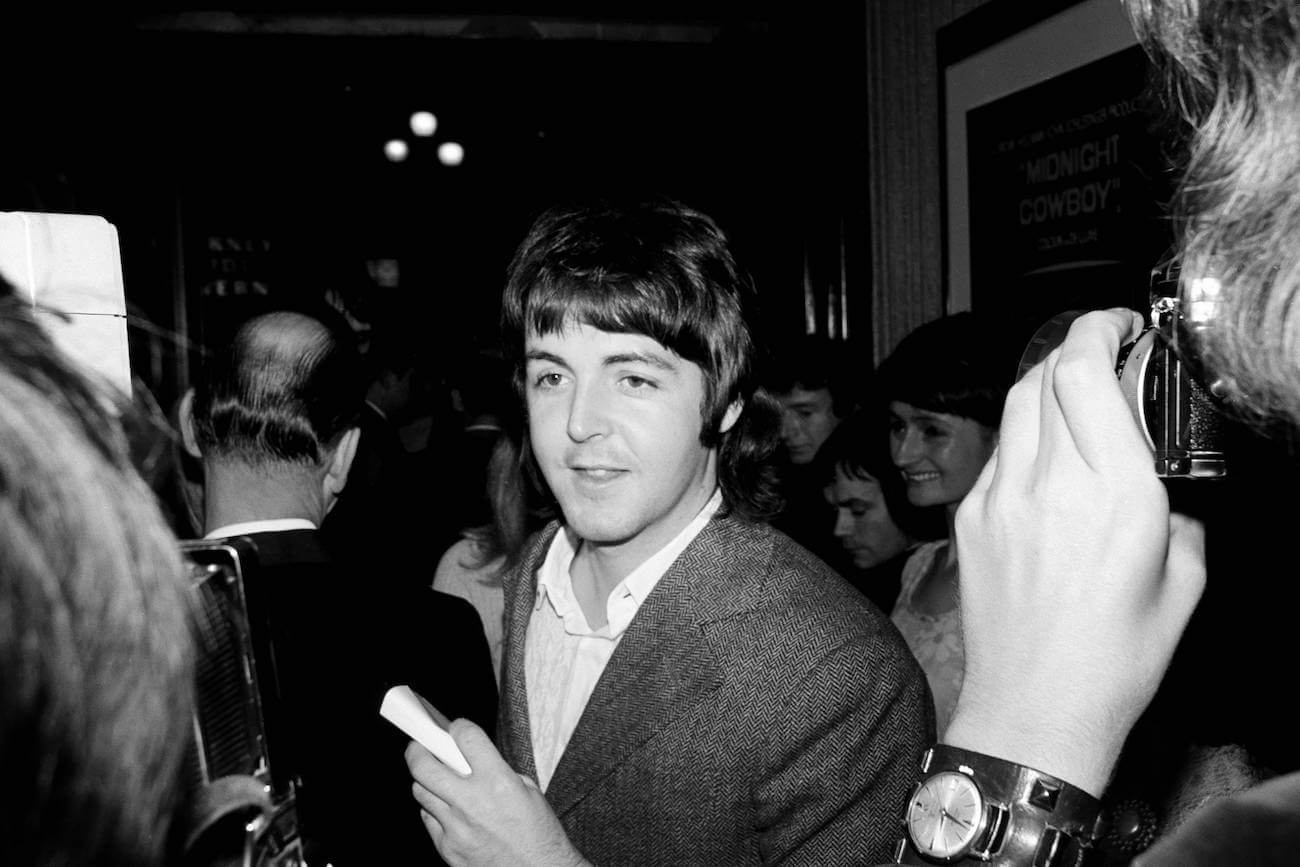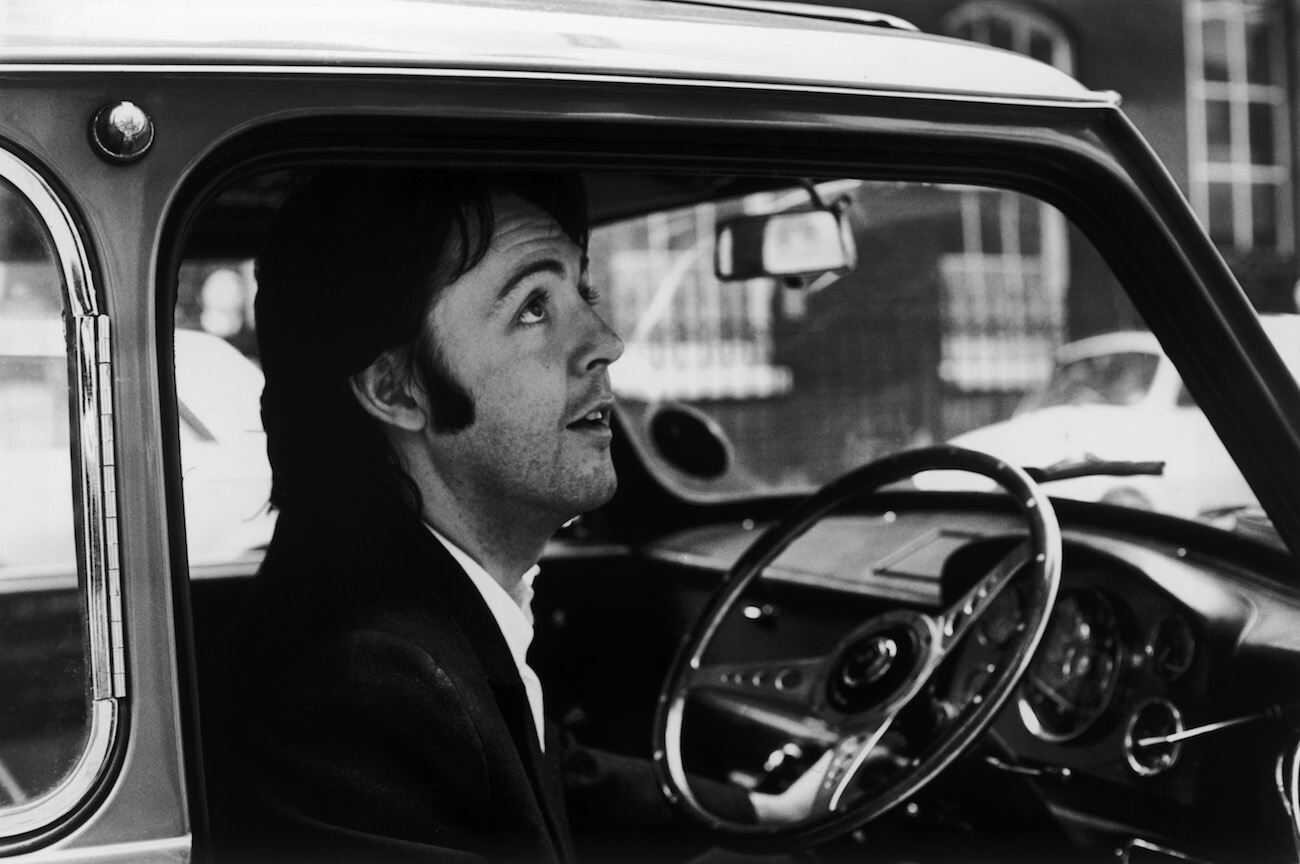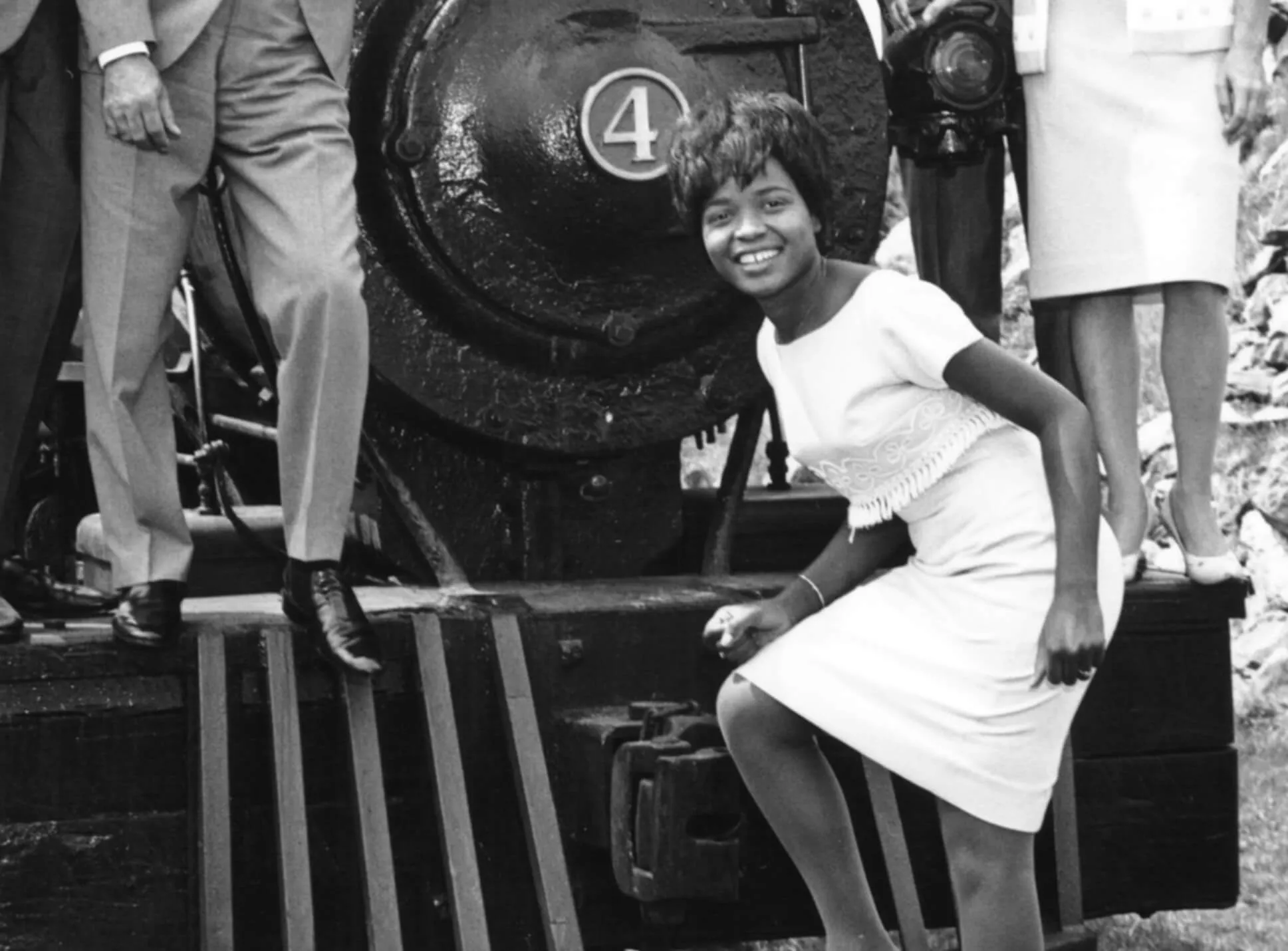
All of the References in The Beatles’ ‘Maxwell’s Silver Hammer’
Many things have influenced Paul McCartney‘s songs over the years. Sometimes a single tune had multiple inspirations, including The Beatles‘ “Maxwell’s Silver Hammer.” Here are all the references in the Abbey Road song.

Alfred Jarry inspired Paul McCartney to write an obscure lyric in The Beatles’ ‘Maxwell’s Silver Hammer’
In his book The Lyrics: 1956 to the Present, Paul explained that while he was driving down the highway one day, he heard a broadcast of Ubu Cocu on BBC Radio 3.
Ubu Cocu is one of three plays, including the better-known Ubu Roi, by the French dramatist Alfred Jarry. It’s subtitled “a pataphysical extravaganza.” Paul said “pataphysical” is a word Jarry made up to “poke fun at toffee-nosed academics.”
Paul liked the word and decided to add it to The Beatles’ “Maxwell’s Silver Hammer.” He was thrilled when he could rhyme “quizzical” with “pataphysical.” Paul said, “I was being a little bit obscure on purpose.”
There are inventor references
In The Lyrics, Paul wrote that Maxwell is “possibly” a descendant of James Clerk Maxwell, who was a pioneer of electromagnetism. The Edison in the tune is obviously Thomas Edison, who invented many things, including the lightbulb. So, there are two “inventor types,” he said.
Paul thinks it’s interesting that he added Edison into the story because The Beatles were making a record, 1969’s Abbey Road. Among his many claims to fame, Edison invented the gramophone.
Like pataphysical, Paul likes that he got the chance to rhyme “Edison” with “medicine” and “Valerie” with “gallery.”
The Moors murderers also inspired Paul on The Beatles’ ‘Maxwell’s Silver Hammer’
There’s another reference in The Beatles’ “Maxwell’s Silver Hammer.” It has to do with Maxwell being a serial killer. According to Paul, the main character’s hammer isn’t an ordinary household hammer. Paul envisioned it as a hammer a doctor uses to hit your knee, but a silver one, not rubber.
On the one hand, Max is like a killer from a children’s story. On the other, he’s a very real and terrifying serial killer. The child’s nursery rhyme aspect comes from the fact that people are getting their heads chopped off. It’s like Lewis Carroll’s Alice in Wonderland character, the Queen of Hearts, who’s always saying, “Off with their heads!”
However, there’s a real-life connection to violence that inspired Paul. Ian Brady and Myra Hindley, the Moors murderers, were jailed for life in 1966 for committing serial murders. Paul admits it’s very likely that he was thinking of them while he wrote The Beatles’ “Maxwell’s Silver Hammer.”
Many things inspired Paul on “Maxwell’s Silver Hammer.” However, the song can also relate to the end of The Beatles. Paul explained that he and the band recorded the tune, knowing they’d never perform it. “That possibility was over, Paul wrote. “It had been knocked on the head like one of Maxwell’s victims. Bang bang.”
The Beatles were knocked on the head like one of Maxwell’s victims. Paul explained that he and his bandmates always worked well together in the recording studio, no matter what was happening outside. However, Paul couldn’t deny that the band had tired of working together. His bandmates hated recording “Maxwell’s Silver Hammer.”
Shortly after they recorded the tune, The Beatles were dead.


